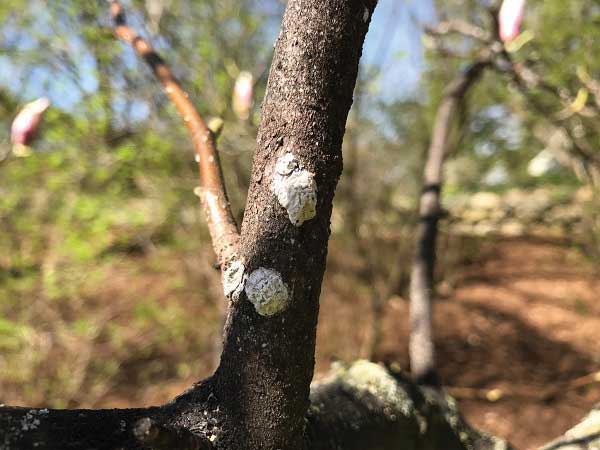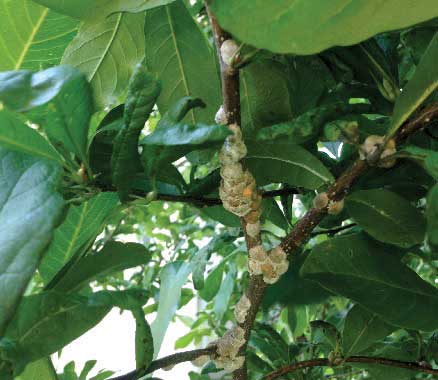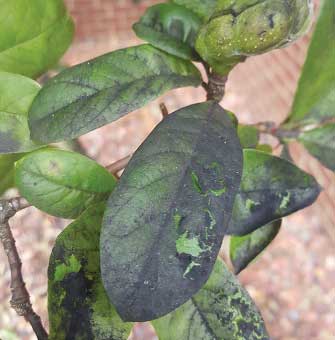PLANT SPOTLIGHT – Magnolia Scale
Magnolia scale is a very common problem for most popular cultivars of Magnolia in Wisconsin. You may have noticed more issues with the magnolias in your landscape in 2021. Hot and dry weather can cause the insect population to multiply which in turn causes increased damage to plants. Extensive feeding on the plant can lead to poor flowering, slow growth, branch dieback or in extreme cases death of the entire plant.
Facts about Magnolia Scale
- The adult female scale measures up to ½” and are light to dark brown and often covered with a white waxy substance.
- They develop one generation per year as females lay eggs in June which hatch in August. The young nymphs (or crawlers) climb out to the 1-2 year-old twigs and cluster together where they spend the remainder of their life.
The photo above shows the “white bumps”
which are the waxy covering of magnolia scale.
The insect is under the protective coating. This
is the previous year’s scale that was treated. - They feed on the sap of the plant by sucking on the twigs and branches and produce sweet sticky droplets called honeydew. Honeydew often attracts wasps or
ants and can lead to the development of sooty mold which stains surfaces of anything beneath the plant black (leaves, patio furniture, etc.). - Control can be difficult and treatment options vary depending on the size and location of the plant, and the severity of the infestation.



